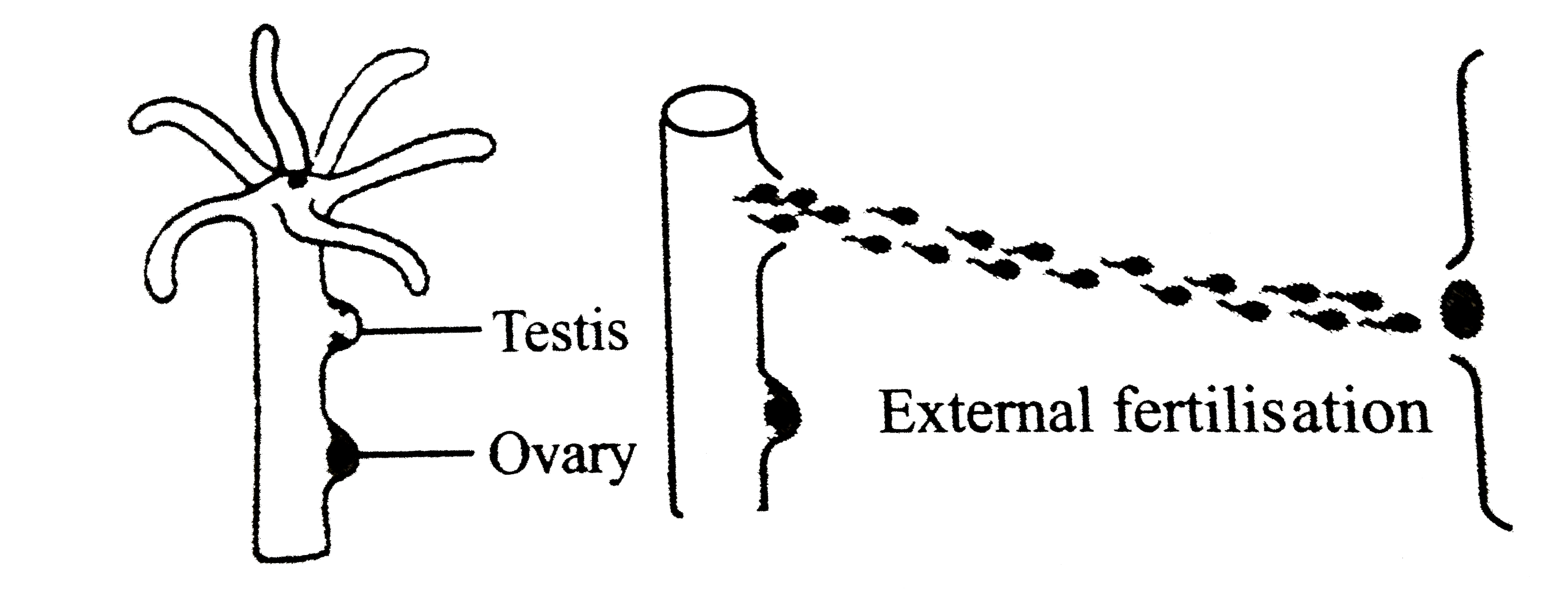Which one can show self fertillization ?
Earthworm
Liver fluke
Fish
Roundworm.
The correct Answer is:b
To answer the question "Which one can show self-fertilization?" we will analyze each option provided: earthworm, liver fluke, fish, and roundworm.
1. Earthworm:
- Earthworms belong to the phylum Annelida.
- They possess both male and female reproductive organs (hermaphroditic).
- However, they typically engage in cross-fertilization because their reproductive organs mature at different times.
- Conclusion: Earthworms do not show self-fertilization.
2. Liver Fluke:
- Liver flukes, also known as Fasciola, belong to the phylum Platyhelminthes.
- They are hermaphroditic, meaning they have both male and female reproductive organs within a single organism.
- Liver flukes can undergo self-fertilization because they possess both types of sex organs.
- Conclusion: Liver flukes can show self-fertilization.
3. Fish:
- Fish typically have separate sexes (dioecious), meaning individual fish are either male or female.
- They do not have both male and female reproductive organs in one organism.
- Conclusion: Fish do not show self-fertilization.
4. Roundworm:
- Roundworms, also known as Ascaris, have distinct male and female individuals.
- They reproduce through cross-fertilization since males and females are separate.
- Conclusion: Roundworms do not show self-fertilization.
Final Answer:
The organism that can show self-fertilization is the Liver Fluke.
---
- Earthworms belong to the phylum Annelida.
- They possess both male and female reproductive organs (hermaphroditic).
- However, they typically engage in cross-fertilization because their reproductive organs mature at different times.
- Conclusion: Earthworms do not show self-fertilization.
- Liver flukes, also known as Fasciola, belong to the phylum Platyhelminthes.
- They are hermaphroditic, meaning they have both male and female reproductive organs within a single organism.
- Liver flukes can undergo self-fertilization because they possess both types of sex organs.
- Conclusion: Liver flukes can show self-fertilization.
- Fish typically have separate sexes (dioecious), meaning individual fish are either male or female.
- They do not have both male and female reproductive organs in one organism.
- Conclusion: Fish do not show self-fertilization.
- Roundworms, also known as Ascaris, have distinct male and female individuals.
- They reproduce through cross-fertilization since males and females are separate.
- Conclusion: Roundworms do not show self-fertilization.
The organism that can show self-fertilization is the Liver Fluke.
Topper's Solved these Questions
- PLATYHELMINTHES-THE FLAT WORMSBOOK - DINESH PUBLICATION ENGLISHCHAPTER - PLATYHELMINTHES-THE FLAT WORMSEXERCISE - check your grasp
9 Videos
- Plant Growth and MovementsBOOK - DINESH PUBLICATION ENGLISHCHAPTER - Plant Growth and MovementsEXERCISE - BRAIN TEASERS-IV
41 Videos
- PRINCIPLES AND APPLICATIONS OF BIOTECHNOLOGYBOOK - DINESH PUBLICATION ENGLISHCHAPTER - PRINCIPLES AND APPLICATIONS OF BIOTECHNOLOGYEXERCISE - Brain Teasers
5 Videos
Similar Questions
Knowledge Check
Given figure of Hydra shows its reproductive structures and manner of fertilisation.
Observe and answer that why is it not showing self fertilisation ?
 ADistance between testis and ovary is more.BSperms do not swim downwards.COvary matures earlier than testis.DTestis matures earlier than ovary.
ADistance between testis and ovary is more.BSperms do not swim downwards.COvary matures earlier than testis.DTestis matures earlier than ovary.
Which one shows meiosis
View SolutionConsider the following statements: a. All oviparous organisms exhibit external fertilization. b. Hermaphrodites can show cross fertilization. c. New individual can develop from ovum (without fusion with sperm) .Which of the above mentioned statements are incorrect?
View SolutionHow many different types of gametes will be formed by a pea plant with genotype TtYy upon self fertilization?
View SolutionIn which of the following organisms self fertilization is seen?
View SolutionA : Most of the species of Chara are monoecious but show cross fertilization
R : The plant body shows protandrous condition .
View SolutionProcess which is antithetical to fertilization is
View SolutionIn which of the following organisms, self fertilization is seen ?
View Solution
